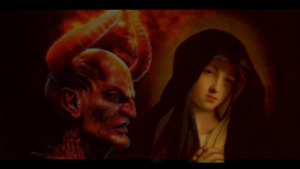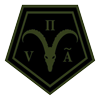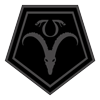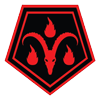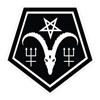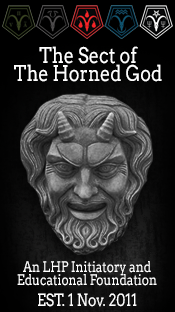Satan and the Virgin Mary: Long Lost Lovers
by Thomas LeRoy
From the first glimmers of the primordial dawn, the Mother Goddess has had numerous interpretations and faces. Many early societies had a “mother-like godform” that honored the sacred feminine. A mother goddess is a personification of the Earth, the mother of all living things, of fertility and the birth of humanity as a whole. Besides the natural representations, Jungian interpretation equates the archetypal Mother Goddess with the feminine aspect within us all, and also with the greater unconscious, that “deepest ground of the psyche”.
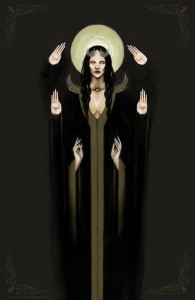
The list of names of the Goddess are endless, and the Virgin Mary, the mother of Jesus, is but one of them. Now, it goes without saying that the Christian mind may find this truth difficult to grasp, but the evidence for this is indisputable. For example, an obscure Early Christian heretical movement, Collyridianism, worshipped the Virgin Mary as a goddess. She was looked upon and worshipped as the supreme being, the Great Mother Goddess. And, as it turns out, “The Virgin” is a mythical character based on older goddesses who were themselves astrotheological personifications of celestial and earthly bodies and principles, the “Queen of Heaven”, prevalent in the ancient world. The old Teutonic goddess Hertha (the Earth) was a Virgin, but was impregnated by the heavenly Spirit (the Sky); and her image with a child in her arms was to be seen in the sacred groves of Germany. The Scandinavian Frigga, in much the same way, being caught in the embraces of Odin, the All-father, conceived and bore a son, the blessed Balder, healer and savior of mankind. Quetzalcoatl, the (crucified) savior of the Aztecs, was the son of Chimalman, the Virgin Queen of Heaven. Even the Chinese had a mother-goddess and virgin with child in her arms; and the ancient Etruscans also. There is the image of Isis nursing her Divine Son, Horus. And like the Christian Mary and Egyptian Isis, the Canaanite goddess Astarte was the “Virgin”. Thus this symbolism of the Goddess and her child has done a good job of expressing the relationship between consciousness and its divine matrix (the collective unconscious) as one of organic unity.
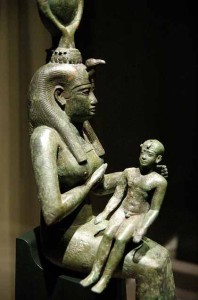
As most might be aware, it was common from the beginnings of Christiandom to adopt older heathen gods and turn them into saints . . . or devils. Castor and Pollux became St. Cosmo and St. Damien; Dionysus still holds his place as St. Denis of Paris. And the Horned God? It’s no stretch to guess who he became. But the relationship between the Neo-Pagan Horned God and the Christian Devil, or Satan, is a bit more complex than one might think. The modern Horned God is a composite of many pre-Christian deities, mostly the Greek Pan and the Celtic Cernunnos. But it was also influenced by Margaret Murray’s interpretation of medieval Christian devil imagery. In this sense, the Horned God is a modern “paganization” of the Devil, with his various animal characteristics representing the beastly nature of humankind; essentially a sacralization of our sexual nature. Thus, because of this exaltation of the beast within, the modern Christian equates the Pagan Horned God with Satan.
And who was, or is, the Horned God’s love-interest? The Goddess.
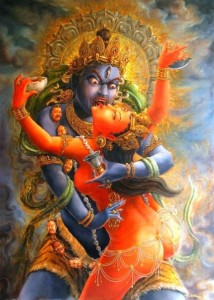
The Horned God and the Goddess, the “Divine Lovers”, represent the ontological polarity between the opposites of male and female common to many mythological traditions: Shiva and Shakti, Pan and Diana, Cernunnos and Brigit, etc. They are metaphorical representations of the Jungian Anima and Animus (the anima, the archetypal feminine symbolism within a man’s unconscious, while the animus is the personification of masculine psychological tendencies within a woman). This symbolism, though, is not found in the Abrahamic traditions. In most cases within this mythological structure the female aspect is vilified while the masculine is exalted. But this is not so in the case of the Goddess and the Horned God. The Goddess has been reinterpreted in a syncretic form into the Virgin, the most revered of all women, while the Horned God has become Satan. And why did they give the Horned God the name of the supreme bad guy in their mythos? Because they hate what He represents. He represents power, lust, carnality, death and knowledge. He is the free-thinking individualist ready to live life on His own terms. As stated before, He is our animal side, that aspect that keeps us tied down to the natural world. He is the antithesis of all that the Christians see as holy. And for their dogma to survive and for there to be calm within the flock, those traits of the human character have to be subdued. But the old time Christians weren’t stupid. They knew that the Horned God was a large part of what a human being is. So by telling the populace that who they are at their core is evil, and you need to kiss the ass of Jesus to be freed of that evil, they created an outstanding system of control. Thus in Christian society came a separation of these long lost lovers (Horned God/Goddess) within the psyche. But no good Christian would ever dream of a union between Satan and the Virgin. This being so, this stark division of archetypes has led to a psychological separation from the anima within the Christian man, and the animus within the Christian women. And by not bringing Satan and the Virgin Mary together, the Christian is an incomplete being.
A symbolic union of Gods and Goddess in the subconscious is important for the health of the psyche. This union of opposites is even evident in the image of that androgynous beast called Baphomet. But don’t worry, connecting with one’s inner male or female element has nothing to do with sexuality. It has everything, though, to do with creating a balance on the scales of passive (female) and aggressive (male) energies within us, which is essential for the development of self-awareness and personal understanding. These are important components of involution (as opposed to evolution) towards reaching the “Higher-Self”.
